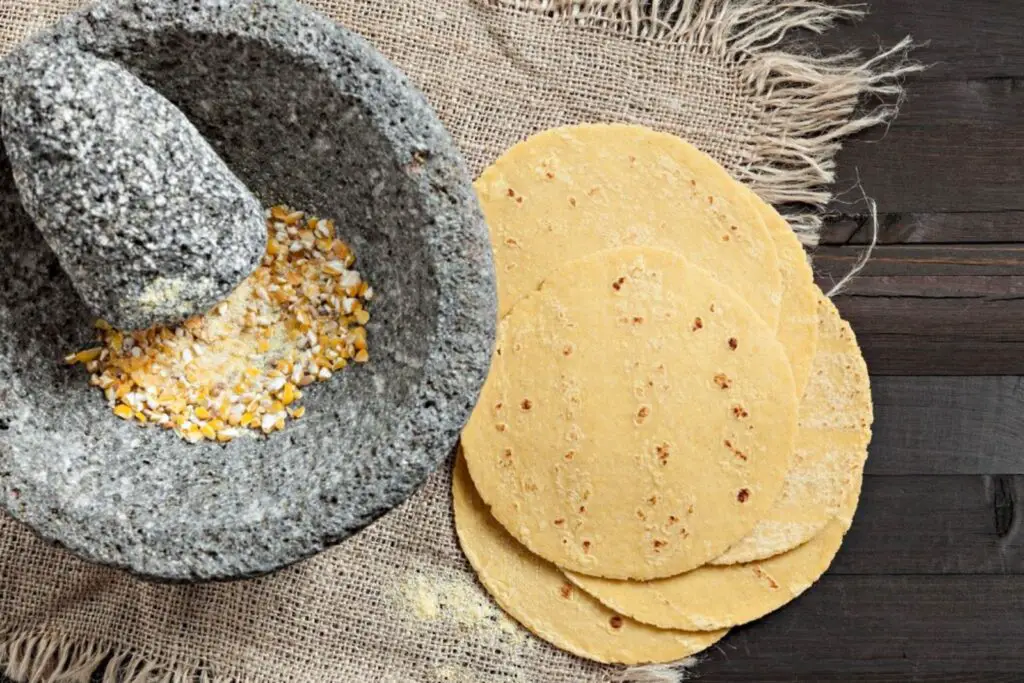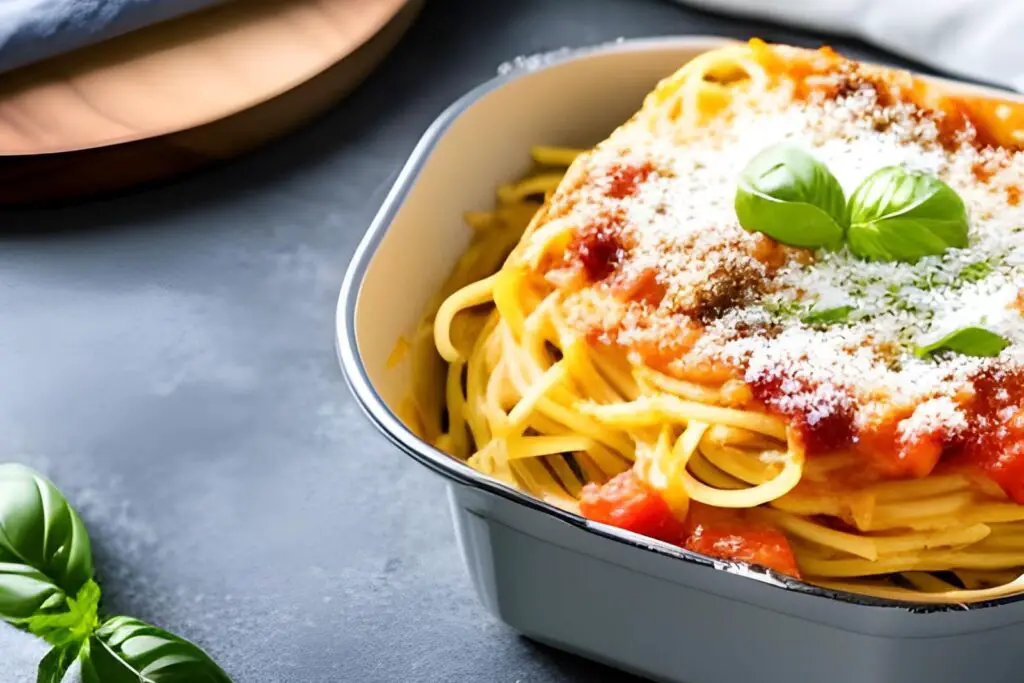
Lasagna, a beloved Italian dish, is a comforting and satisfying meal that has become a favorite in households worldwide. Layered with pasta sheets, rich tomato sauce, a creamy cheese filling, and various savory ingredients such as ground meat, vegetables, and herbs, lasagna offers a symphony of flavors and textures. Whether homemade or store-bought, lasagna provides a hearty and crowd-pleasing option for family gatherings and special occasions.
If you have made a large batch of lasagna or want to prepare it in advance for convenient meals, freezing can be a fantastic way to preserve its taste and ensure it remains readily available. Freezing lasagna allows you to enjoy this classic dish at your convenience, whether for a quick weeknight dinner or a special celebration. In the following section, we will explore the process of freezing lasagna and provide tips for maintaining its texture and flavor after thawing.
Here’s how to freeze lasagna:
Step 1: Allow the lasagna to cool down to room temperature.
Allowing lasagna to cool down to room temperature before freezing is an important step to ensure that the dish stays fresh and retains its flavor and texture. When hot food is placed in the freezer, it can cause a sudden drop in temperature, which can lead to the formation of ice crystals on the surface of the dish. These ice crystals can cause freezer burn, which can make the lasagna taste dry and unpleasant.
Additionally, placing a hot lasagna dish in the freezer can cause the dish to crack or shatter due to the rapid change in temperature. This can be especially problematic if the dish is made of glass or ceramic. Allowing the lasagna to cool down to room temperature before freezing will reduce the risk of this happening, ensuring that the dish is safe to handle and that it will not break or crack in the freezer.
Step 2: Cut the lasagna into portions.
This step also makes it easier to serve and portion the lasagna when it’s time to eat.
Using a sharp knife to cut the lasagna into portions will help to prevent the layers from shifting or becoming uneven during the freezing process. This will make it easier to thaw and reheat individual portions, without the need to thaw the entire dish.
By cutting the lasagna into portions, you can also control the amount that you thaw and reheat at one time. This is especially useful if you have a small household or if you’re only planning on reheating a single serving of lasagna. It will also allow you to save time and energy by only reheating the portions that you need, rather than the entire dish.
Step 3: Wrap each portion tightly in plastic wrap.
Wrapping lasagna portions tightly in plastic wrap or aluminum foil is an essential step in the freezing process that helps to preserve the quality of the dish. Proper wrapping prevents freezer burn and the formation of ice crystals, which can lead to loss of flavor and texture.
When food is exposed to air in the freezer, moisture can evaporate and cause freezer burn, which is characterized by dry, discolored patches on the surface of the food. This can negatively impact the taste and texture of the lasagna. Tight wrapping using plastic wrap or aluminum foil helps to create a barrier between the food and the air, reducing the risk of freezer burn and keeping the lasagna moist.
Step 4: Label and freeze.
This step helps to ensure that the portions remain fresh and safe to eat, even after extended periods of time in the freezer.
Labeling each portion with the date is important because it allows you to keep track of how long the lasagna has been in the freezer. This information is important because frozen foods can start losing their quality after a certain time. By knowing how long the lasagna has been frozen, you can ensure that it is still safe to eat and hasn’t been in the freezer for too long.
Once the portions have been labeled, they should be placed in a freezer-safe container or plastic bag. Freezer-safe containers are specifically designed to withstand the low temperatures of the freezer, which can cause other containers to crack or break. Plastic bags are also a good option, as they are flexible and can easily conform to the shape of the portions, maximizing the use of freezer space.
Step 5: Thaw and reheat.
When you’re ready to eat the lasagna, remove it from the freezer and let it thaw in the refrigerator overnight. Thawing in the refrigerator allows the lasagna to defrost slowly and evenly, which helps to prevent the formation of ice crystals that can negatively affect the texture and taste of the dish.
Once the lasagna is thawed, it can be reheated in the oven at 350°F (175°C) for 30-40 minutes, or until heated through. Covering the lasagna with foil during reheating helps to trap moisture and prevent the lasagna from drying out.
It’s important to ensure that the lasagna is heated to an internal temperature of at least 165°F (74°C) before serving to ensure it is safe to eat. Using a food thermometer can help to ensure that the lasagna is heated to the appropriate temperature.
Other related questions
How long can you keep lasagna in the freezer?
Lasagna can be stored in the freezer for up to three months without significant loss of quality or safety concerns. However, for best results, it’s recommended to consume it within 1-2 months to ensure optimal taste and texture. To maximize the lasagna’s shelf life, store it in airtight containers or freezer-safe bags, label them with the date of freezing, and avoid opening and closing the freezer frequently. Properly stored frozen lasagna can be a convenient make-ahead meal option that allows for easy meal planning and reduces food waste.
Can you refreeze the lasagna that has been previously thawed?
It is not recommended to refreeze lasagna that has been previously thawed. Freezing and thawing can cause changes in the texture and quality of the food, and refreezing can further damage the structure of the lasagna, leading to a loss of flavor and moisture. Additionally, refreezing can increase the risk of bacteria growth, as the lasagna has already been exposed to potentially harmful bacteria during the first thawing process. It’s best to only thaw the amount of lasagna you plan to consume and avoid refreezing to ensure the best quality and safety of the dish.
How do I know if my frozen lasagna has gone bad?
If your frozen lasagna has gone bad, it may have an off odor, strange texture, or discoloration. If there is any visible mold, it should not be consumed. Additionally, if the lasagna has been stored improperly or for too long, it may develop freezer burn, which appears as white or grayish-brown spots on the surface of the lasagna. While freezer burn is not harmful to eat, it can affect the texture and flavor of the lasagna. When in doubt, it’s best to discard any frozen lasagna that appears to have gone bad or has been stored for an extended period of time to avoid the risk of foodborne illness.
Does freezing lasagna affect its flavor and texture?
Freezing lasagna can affect its texture and to some extent, its flavor. The moisture content and texture of the pasta may change slightly after freezing and thawing, and the dish may become slightly drier. However, if the lasagna is wrapped tightly to prevent freezer burn and thawed slowly in the refrigerator, the impact on flavor and texture should be minimal. Reheating the lasagna in the oven or microwave can help to restore some of its original flavor and texture. Overall, while freezing can have some impact on the flavor and texture of lasagna, it remains a convenient and effective way to preserve the dish for later consumption.
Can I use frozen lasagna with fresh ones?
Yes, you can use frozen lasagna with fresh lasagna in the same dish, but there are some things to consider. When combining frozen and fresh lasagna in the same dish, it’s important to adjust the cooking time and temperature to ensure that both types of lasagna cook evenly. The frozen lasagna may also release more liquid during cooking, which can affect the texture of the dish. To minimize this, you can partially thaw the frozen lasagna before using it in the dish. Overall, using a combination of frozen and fresh lasagna in the same dish can be a good way to save time and reduce waste, but it requires careful attention to cooking times and temperatures.
Can you freeze lasagna with cottage cheese instead of ricotta?
Yes, you can freeze lasagna with cottage cheese instead of ricotta. Cottage cheese can be used as a substitute for ricotta in lasagna, and it freezes well. To freeze lasagna with cottage cheese, let it cool to room temperature, wrap it tightly in plastic wrap or aluminum foil, and place it in an airtight container or freezer-safe bag. Label and date the container or bag and place it in the freezer. Frozen lasagna with cottage cheese can be stored in the freezer for up to three months and thawed and reheated when ready to serve.
Can you freeze lasagna with cream sauce?
Yes, you can freeze lasagna with cream sauce. However, cream sauces have a tendency to separate and become grainy when frozen and thawed, which can affect the texture of the lasagna. To minimize this, it’s recommended to use heavy cream instead of lighter cream alternatives, as it has a lower risk of separating. Additionally, consider adding a layer of cheese on top of the cream sauce layer, which can help to prevent moisture loss. Properly stored, frozen lasagna with cream sauce can last up to three months in the freezer and be thawed and reheated when ready to serve.
Can you freeze lasagna noodles separately from the sauce and cheese?
Yes, you can freeze lasagna noodles separately from the sauce and cheese. To freeze lasagna noodles, cook them according to the package instructions, drain them, and allow them to cool to room temperature. Once cooled, place the noodles in a single layer in a freezer-safe container or bag, and label and date the container or bag. To use the frozen noodles, thaw them in the refrigerator overnight and then use them to assemble a new lasagna. Freezing lasagna noodles separately from the sauce and cheese can be a convenient way to have ready-to-use noodles on hand for quick lasagna assembly.








